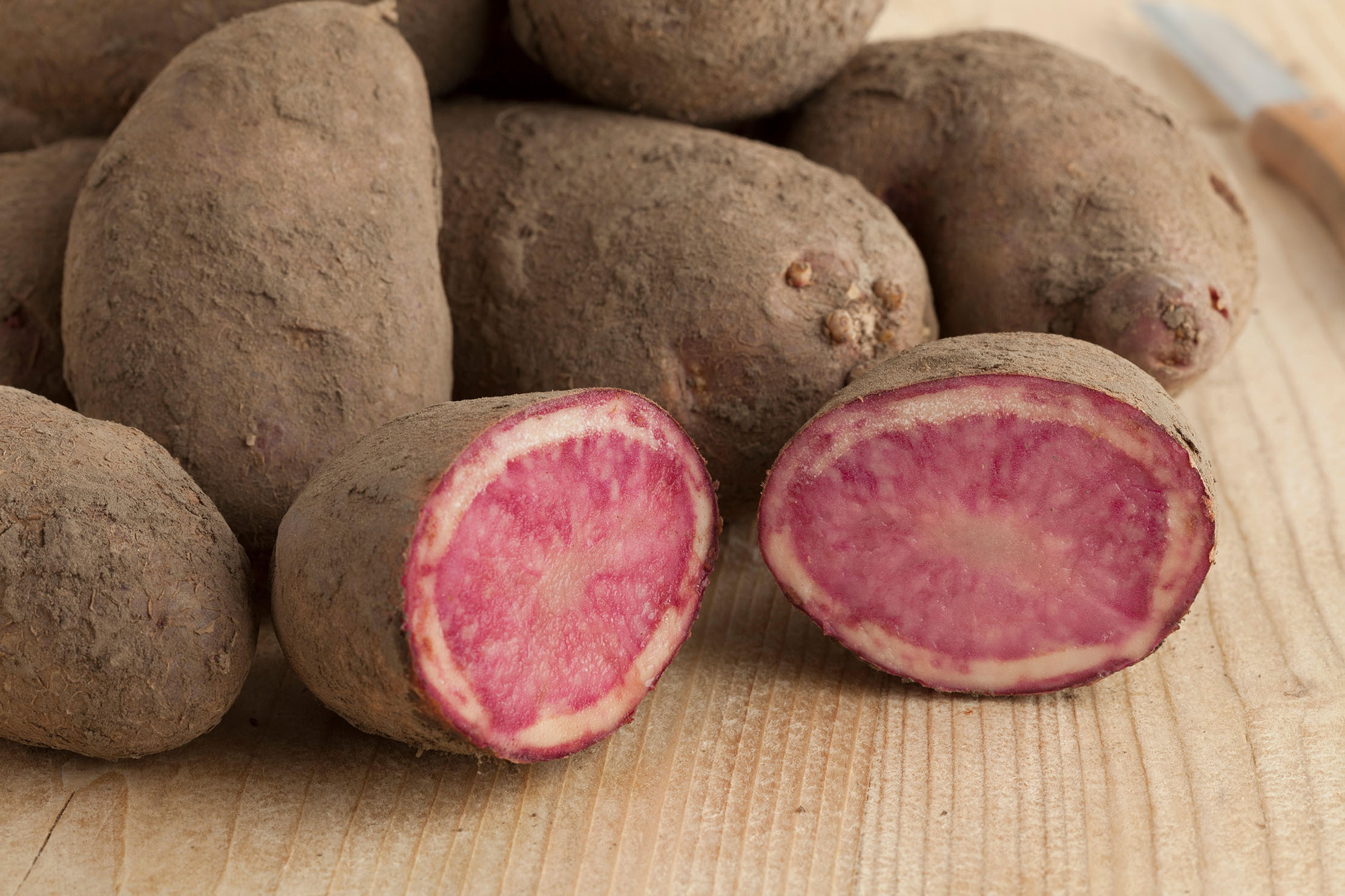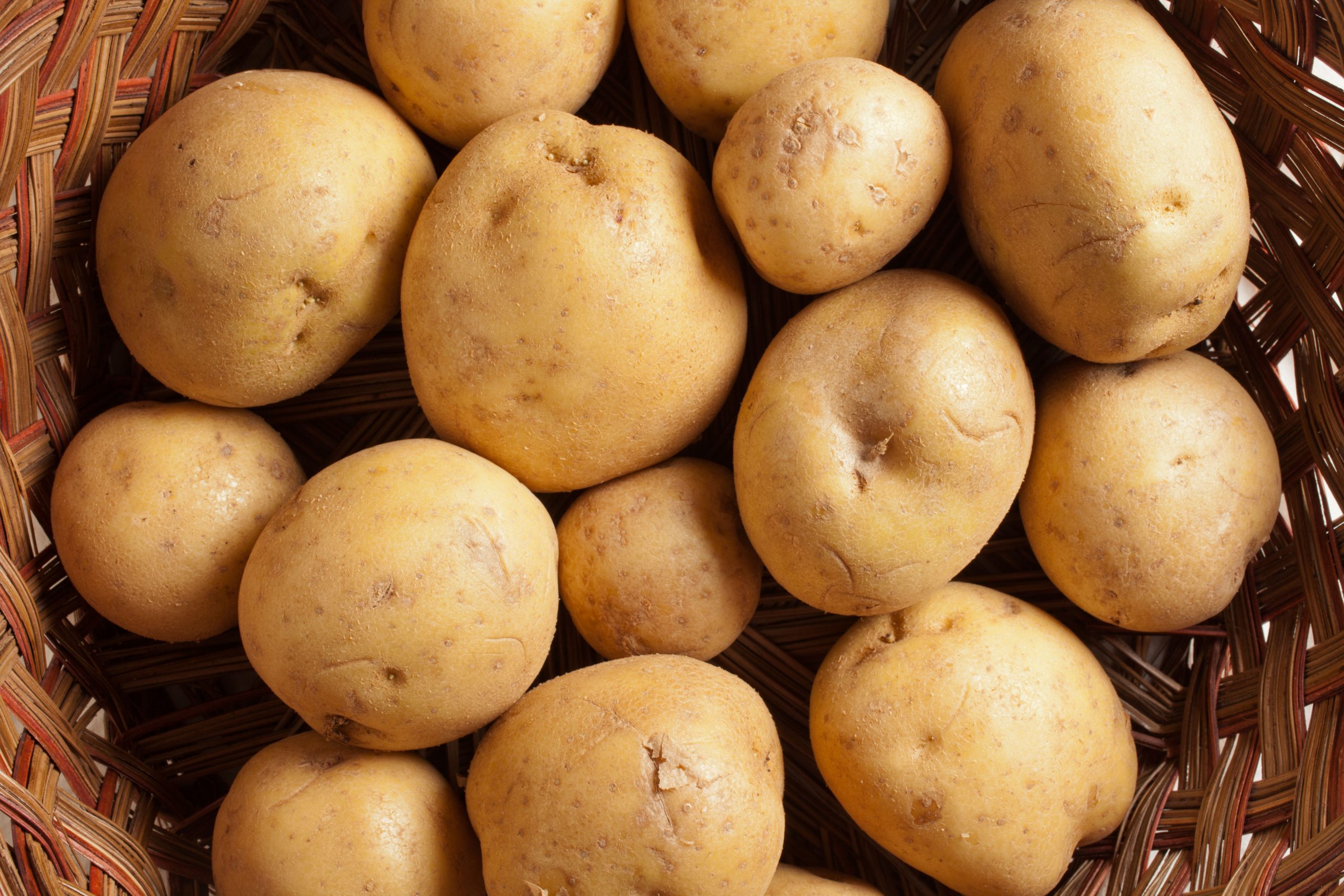The best potato varieties to grow in a British garden
If you grow your own potatoes, you may find things are a little harder this year — but Mark Diacono picks out nine varieties that you can grow yourself which will easily outstrip what you find in the shops for flavour, texture and often colour.


I have a longstanding rule when it comes to suppliers: don’t buy potatoes from anywhere that will sell you lightbulbs. Use specialist nurseries and you’ll be dealing with people who do this for a living, who have a wealth of experience and understanding when it comes to varieties.
Seed potatoes are usually sold by the kilo — in nets of 10 tubers or so, depending on variety — so clubbing together to order allows you to each try a greater range. And bear in mind that you might want to choose varieties that are ready in steady succession, rather than larger numbers of fewer varieties maturing at once.
This year the choice is a little different. The ever-popular French varieties are largely unavailable following Brexit, but there are still so many lesser-known delicious potatoes to choose from. Here are a few of my favourites to keep an eye out for:
Nine of the best potato varieties to grow in your garden
Highland Burgundy Red
A red-fleshed, heritage second early/early main crop potato (chosen in the 1930s to add the appropriate colour to the Duke of Burgundy’s meals at the Savoy Hotel) is a cracking all rounder that makes superb chips.
Edzell Blue
An old blue-skinned, floury second early that is superb mashed, baked, roasted or steamed.
Yukon Gold
A superb second early/early maincrop variety from Canada that is great for jacket potatoes and makes the best chips.

Kestrel
A floury Scottish second early variety that makes fantastic mash and has excellent resistance to slugs.
Exquisite houses, the beauty of Nature, and how to get the most from your life, straight to your inbox.
Salad Blue
A blue-skinned, blue-fleshed, floury, delicately flavoured early maincrop potato that makes superb mash, roasties and crisps.

International Kidney
The ‘Jersey Royals’ that cause such a stir when they arrive in spring are actually this second early/early maincrop variety. Grow them yourself and they’re even better than bought.
Vitelotte
A maincrop salad potato with long purple tubers and a superb chestnut flavour.

King Edward and Cherie
That's right: even those with names you recognise from the shops are likely to be better when from your own garden. ‘King Edward’ and ‘Cherie’ are two of the many that have a fuller depth of flavour when grown — usually more slowly — yourself.
How to buy your potatoes at Potato Days
Those first winter mornings of walking to big school were punctuated by visits to the sweet shop, where the heating woke my hands up again. I had no interest in the bars and packets, I wanted little paper bags filled from shelves of tall glass jars: a few sherbet lemons, some chocolate bonbons, perhaps a handful of mint humbugs. I’m not sure which was better, the walk to the shop pondering what I might get and if there were any new kinds in or the rest of the day, slowly enjoying the contents of my bulging blazer pockets. Fast forward a few decades and I have the same feelings about Potato Days.
For the uninitiated, potato days are mini markets, often held in a village hall, where seed potatoes are sold. It’s a sort of jumble sale for the green-fingered. There are two things that make them special: varieties are in great number, often including rare cultivars, and there are experts on hand to advise on the best to suit your growing conditions and when you want to harvest them.
Perhaps the most enjoyable element of a potato day is that — as with my visit to the sweet shop on the way to school — you can mix and match as you choose. It’s an invitation to eat beyond the narrow range offered in the shops; you can even search for varieties that suit your favourite potato recipes. Rather than buy nets of 10 or more tubers of each variety as are normally available from nurseries, you can buy by the tuber. Even if you have space to sow only a dozen seed potatoes, you can still enjoy a dozen varieties with their different flavours and textures.
Potato days are often publicised through allotment groups and gardening societies; an online search might show events near you. If they have passed or there isn’t a potato day nearby (and, of course, there may be fewer this year), you can mimic something of the pleasure by collaborating with others when ordering.
There is another thing that makes potato days so special; they sound an early starter gun on the growing season ahead. In these still-short days, they offer that gentle thrill that spring is not far away and a sense that the investment of an hour or two choosing varieties will pay off in so many pleasure-giving meals through summer and beyond.
Mark is lucky enough to spend most of his time eating, growing, writing and talking about food. He has written fourteen award-winning books, including A Year at Otter Farm and A Taste of the Unexpected (both won Food Book of the Year, and Garden Book of the Year). Known for growing everything from Szechuan pepper to pecans to Asian pears, Mark's refreshing approach to growing and eating has done much to inspire a new generation to grow some of what they eat. He was involved in the early days of River Cottage, appearing in the TV series, and writing four River Cottage books. Mark writes to a global audience on his best-selling Substack: Mark Diacono’s Abundance.
